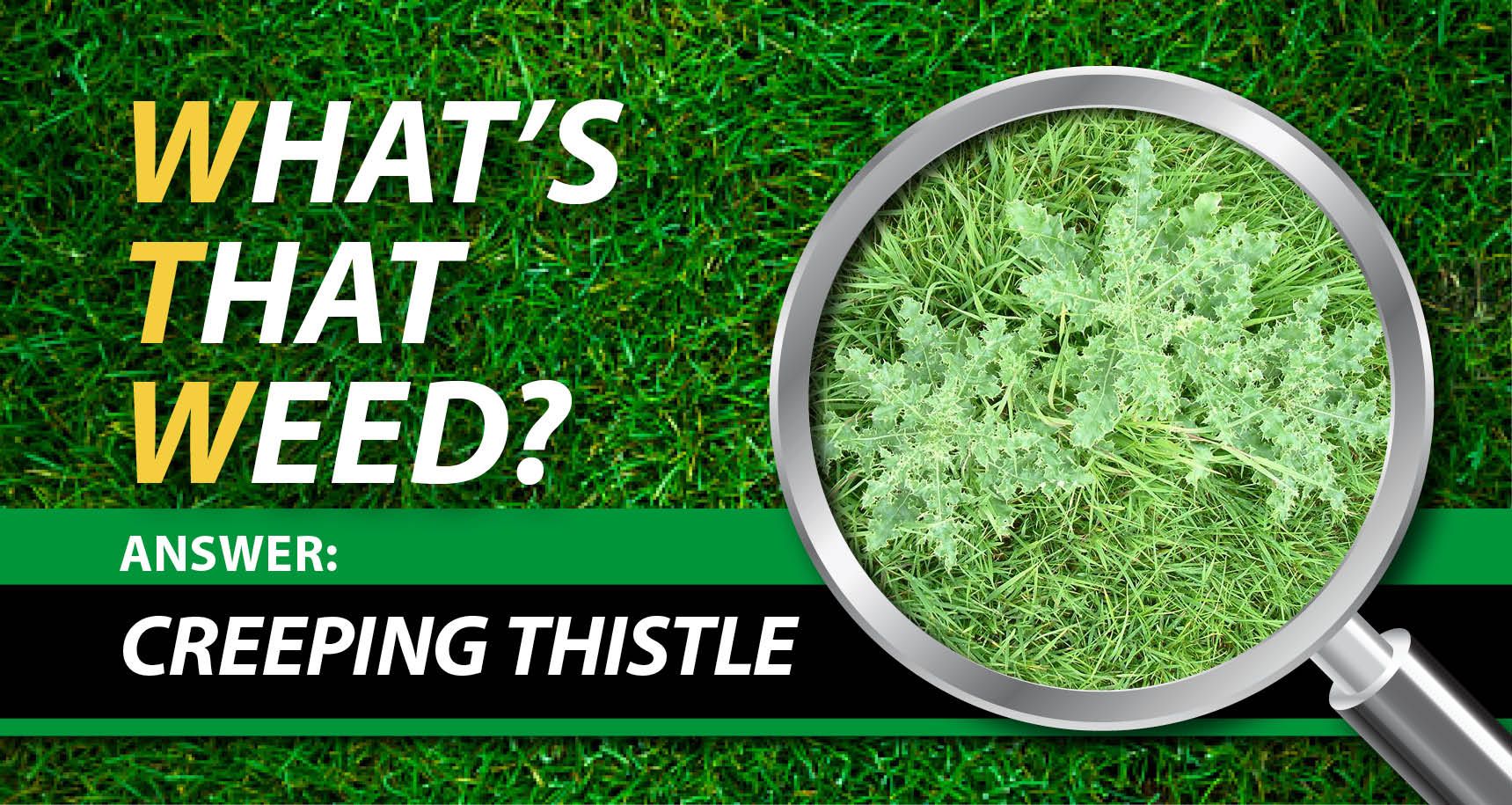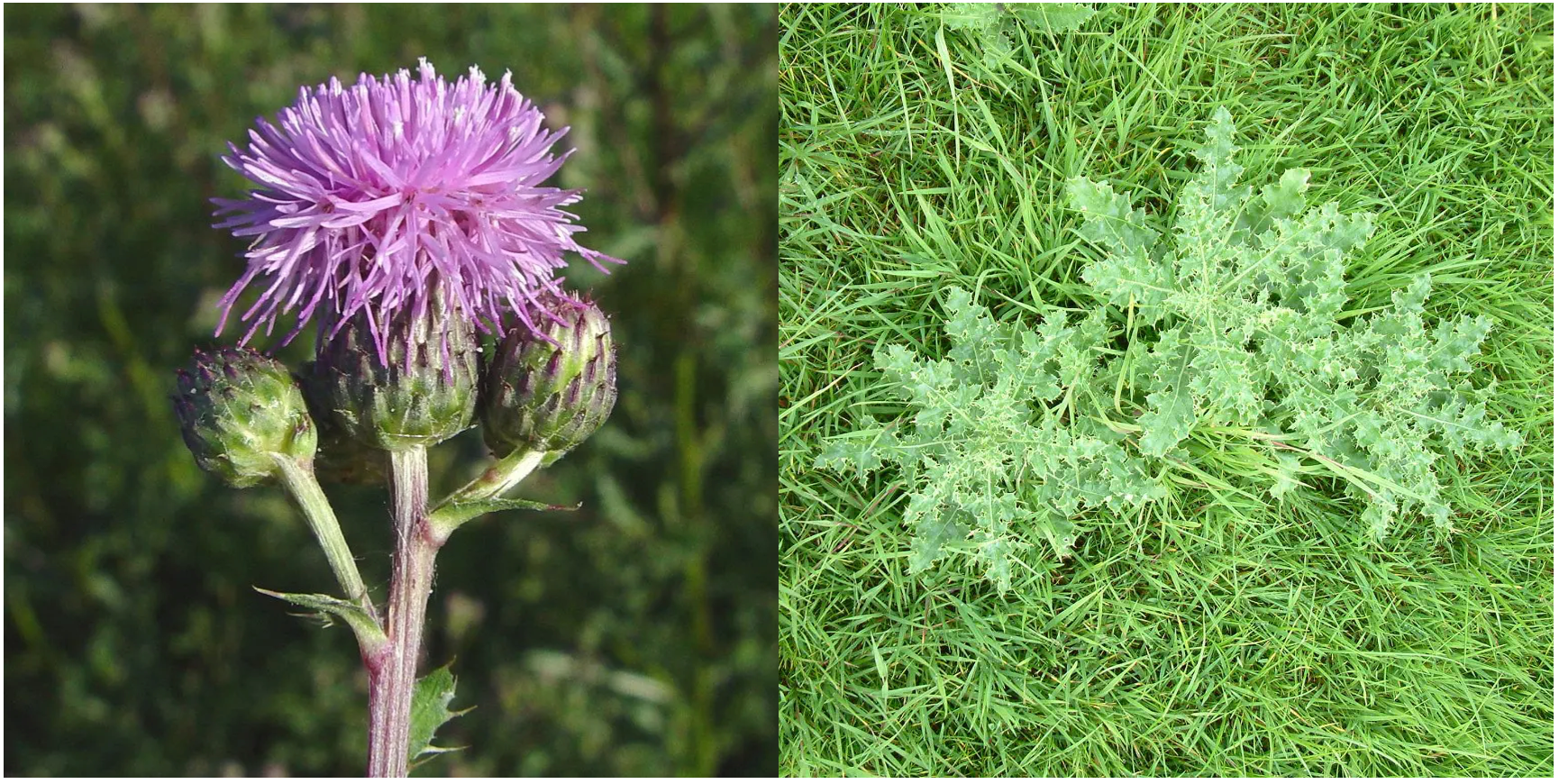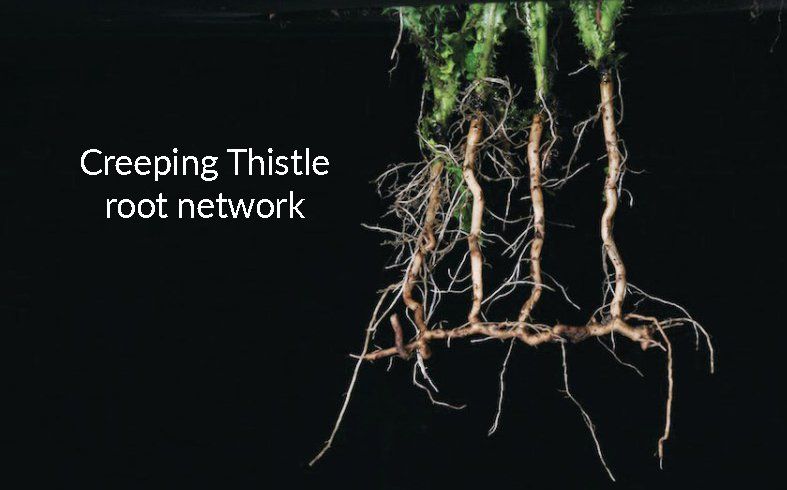What's that Weed? Creeping Thistle



If herbicides are the preferred method of removing Creeping Thistle, apply when the weed is actively growing in the spring or early fall. You can use a broad-spectrum herbicide that will not damage trees or other ornamentals in a shared root zone (such as 2,4-D MCPA, Triclopyr or Dicamba) or a non-selective herbicide (glyphosate) when you can safely target the weed directly. In most cases, apply the herbicide in a heavier than normal concentration, as Creeping Thistle has a root network often larger than its above ground shoot mass and multiple treatments may be necessary. Once applied, DO NOT mow or cut back the thistle in any way; allow the herbicide to absorb into the shoot tissue so that it may be transported down to the roots.
PREVENTION
Creeping Thistle typically thrives in low fertility soils so amending the soil and improving the environment for your preferred plants and turf can reduce its appearance. You can also avoid this weed by applying a pre-emergent herbicide/fertilizer application in the early spring that will prevent it, or any thistle species, from taking hold of your lawn throughout the season.
For professional fertilizers, humic and AMP-XC™ enriched products available, please visit TurfCare’s online Product Catalog.
For green industry professionals or others interested in ordering Turfcare products, please contact our Customer Service to find a distributor near you.
The TURFReport Highlights:
Additional Articles and Insights
















